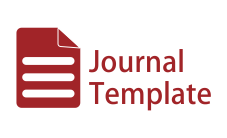The use of Hajj fund for investment purpose: a maqashid sharia approach
DOI:
https://doi.org/10.21580/jiemb.2019.1.1.3740Keywords:
consideration, Islamic scholar, Hajj, financial literacy, maqashidAbstract
Purpose - Hajj financial use The Hajj is an obligation for Muslims who can carry out. Over time, the number of people who perform Hajj is increasing, but the quota is minimal. It raises new problems; one of them is the problem of the financial management of Hajj. The financial of Hajj accumulates and inflation occurs every year. One of the solutions to the financial problem in Hajj is to invest in a productive field. The purpose of this paper is to find out the Islamic scholars’ consideration of the justification of using Hajj fund and investing it in productive fields.
Method - This research is conducted through a qualitative descriptive approach.
Result - All Islamic organizations in Indonesia, especially MUI (Majelis Ulama Indonesia/ Indonesian Ulama Council), justify the Hajj financial use.
Implication - The result can be used by society as information and consideration regarding Hajj and the mechanism of financial management in religious prayers administered by the government.
Originality - This research study the recent existence of investment purposes in Hajj fund management.
Downloads
References
Alhafiz (2017) Ini Sikap NU Terkait Polemik Investasi Dana Haji Untuk Proyek Infrastruktur. http://www.nu.or.id/post/read/83661/ini-sikap-nu-terkait-polemik-investasi-dana-haji-untuk-proyek-infrastruktur.
Al Jazzairi, Abu Bakar Jabir (2015) Minhajul Muslim, Terj. Ferdian Hasmand ,. Al Kautsar.
Amrin, Abdullah (2009) Bisnis, Ekonomi, Asuransi, & Keuangan Syariah, Jakarta: Grassindo,.
Arifin, Gus (2010) Tip&Trik Ibadah Haji & Umrah. Jakarta: Gramedia,.
BPKH (2018) Diseminasi Peran Pengawasan Keuangan Haji,. In . bpkh.go.id/.
Burhanudin, Jajat (2012) Ulama Dan Kekuasaan: Pergumulan Elite Politik Muslim Dalam Sejarah Indonesia,. Bandung: Mizan,.
Faniyah, Iyah (2017), Investasi Syariah Dalam Pembangunan Ekonomi Indonesia,. Sleman: Depublish,.
Ferry, Oscar (2017) MUI Fatwakan 4 Syarat Pemanfaatan Dana Haji. https://www.cnnindonesia.com/nasional/20170802100639-20-231857/mui-fatwakan-4-syarat-pemanfaatan-dana-haji.
Firman, Muhammad (2017), Beda Cara Kelola Dana Haji Indonesia vs Malaysia. https://katadata.co.id/infografik/2017/08/03/beda-cara-kelola-dana-haji-indonesia-vs-malaysia.
Frisdiantara, Christea, and Imam Mukhlis, (2016) Ekonomi Pembangunan: Sebuah Kajian Teoretis Dan Empiris,. Malang: Lembaga Penerbitan Universitas Kanjuruhan.
Irwanto (2006) Focused Group Discussion : Sebuah Pengantar Praktis,. Jakarta: Yayasan Obor.
Jordan, Ray (2017) Presiden Jokowi: Kuota Haji Indonesia Untuk 2017 Jadi 221 Ribu. https://news.detik.com/berita/3393547/presiden-jokowi-kuota-haji-indonesia-untuk-2017-jadi-221-ribu (diakses pada tanggal 30 Agustus 2018).
Khoiron(2017) Soal Investasi Dana Haji, MUI Kuatkan Pandangan Menteri Agama. https://kemenag.go.id/berita/read/505062/soal-investasi-dana-haji----mui-kuatkan-pandangan-menteri-agama.
MMI (2017) Pernyataan Majelis Mujahidin Penggunaan Dana Haji Oleh Pemerintah. https://www.majelismujahidin.com/pernyataan-majelis-mujahidin-penggunaan-dana-haji-oleh-pemerintah/.
Mustami, Adinda Ade (2017) Kepuasan Jemaah Di Arafah Dan Mina Turun. http://fokus.kontan.co.id/news/kepuasan-jemaah-di-arafah-dan-mina-turun.
Nurhasanah (2011), Hajj saving Malaysia Dalam Perspektif Ekonomi,. Al-Iqtishad: , Vol. III.
Primadhyta, Safyra (2017) Untung Dan Buntung Investasi Dana Haji Ke Infrastruktur. https://www.cnnindonesia.com/ekonomi/20170802121306-78-231888/untung-dan-buntung-investasi-dana-haji-ke-infrastruktur.
Rastika, Icha (2014) KPK Duga Ada Penggelembungan Harga Dalam Proyek Haji. https://nasional.kompas.com/read/2014/05/22/2321543/KPK.Duga.Ada.Penggelembungan.Harga.dalam.Proyek.Haji.
Shidiq, Saifudin (2017) Ushul Fiqh,. Jakarta: Kencana, 2017),.
Sholihin, Ahmad Ifham (2010) Buku Pintar Ekonomi Syariah,. Jakarta: Gramedia.
Shomad, Abd. (2010) Hukum Islam: Penormaan Prinsip Syariah Dalam Hukum Indonesia Ed. Revisi,. Jakarta: Kencana,.
Siyoto, Sandu, and M. Ali Sidik (2015), Dasar Metodologi Penelitian,. Sleman: Literasi Publishing.
Sudrajat (2017) 10 Tabungan Haji Malaysia. https://finance.detik.com/infografis/d-3577028/begini-pengelolaan-dana-haji-di-malaysia.
Sugiarto, Eko (2015) Menyusun Proposal Penelitian Kualitatif: Skripsi Dan Tesis,. Yogyakarta: Suaka Media.
Suryani, and Hendryadi, (2016) Metode Riset Kuantitatif: Teori Dan Aplikasi Pada Bidang Penelitian Manajemen Dan Ekonomi Islam,. Jakarta: Kencana,.
Syakur, Muhammad Abdus (2017) Soal Penggunaan Dana Umat, Dahnil: Sebaiknya Pemerintah Fokus Perbaikan Pelayanan Haji. https://www.hidayatullah.com/berita/info-haji-umrah/read/2017/07/30/120667/soal-penggunaan-dana-umat-dahnil-sebaiknya-pemerintah-fokus-perbaikan-pelayanan-haji.html.
Tambunan, Amisyah (2017) Optimalisasi Pengelolaan Dana Haji,: Mimbar Ulama : Suara Majelis Ulama Indonesia.
Undang-Undang Nomor 34 Tahun 2014 Tentang Pengelolaan Keuangan Haji
N.d.
Zed, Mustika (2008) Metode Penelitian Kepustakaan, Hlm. 1. Jakarta: Yayasan Obor
Downloads
Published
Issue
Section
License
Authors who publish with this journal agree to the following terms:
Authors retain copyright and grant the journal right of first publication with the work simultaneously licensed under a Creative Commons Attribution-ShareAlike 4.0 International License that allows others to share the work with an acknowledgement of the work's authorship and initial publication in this journal.
Authors are able to enter into separate, additional contractual arrangements for the non-exclusive distribution of the journal's published version of the work (e.g., post it to an institutional repository or publish it in a book), with an acknowledgement of its initial publication in this journal.
Authors are permitted and encouraged to post their work online (e.g., in institutional repositories or on their website) prior to and during the submission process, as it can lead to productive exchanges, as well as earlier and greater citation of published work (See The Effect of Open Access).



